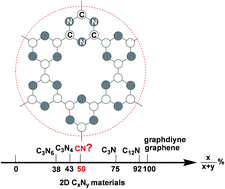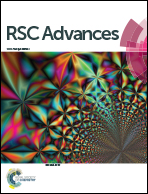A uniformly porous 2D CN (1 : 1) network predicted by first-principles calculations
Abstract
A novel 2D structure composed only of carbon and nitrogen elements at the molar ratio of 1 : 1 is predicted by first-principles calculations. The basic structural units are 1,3,5-triazine molecules which trimerize and polymerize into a 2D network of semiconductor nature. Six triazine units comprise a hollow hexagon with a van der Waals hole diameter of about 2.4 Å, which is suitable for H2 separation from larger molecules. Metal atoms of various sizes can strongly bind over the polynitrogen pore, which suggests that the 2D network is an ideal support for single-atom catalysis.


 Please wait while we load your content...
Please wait while we load your content...